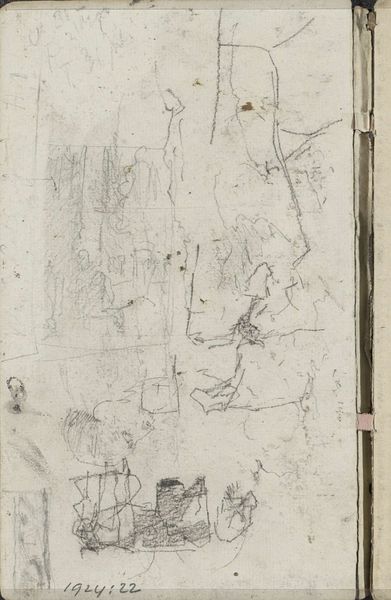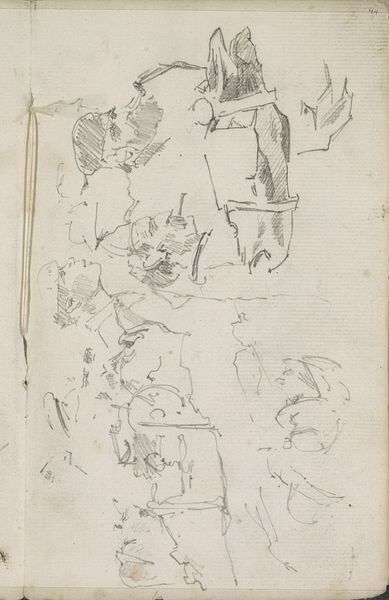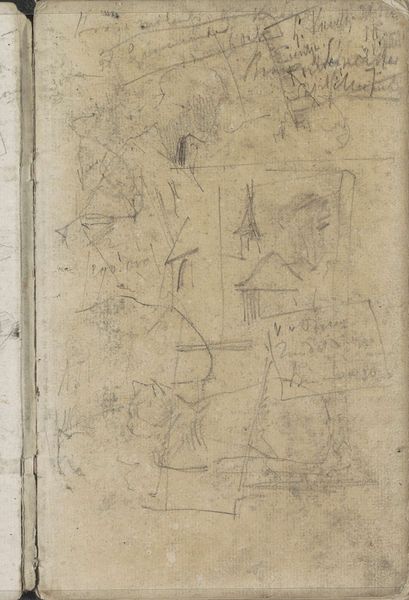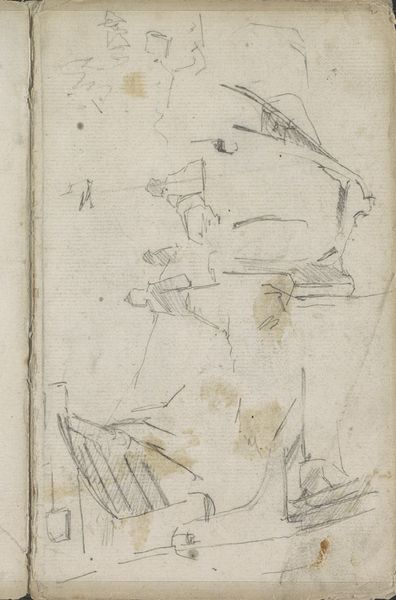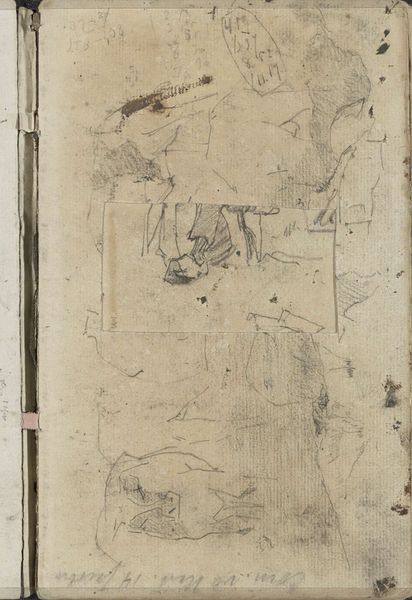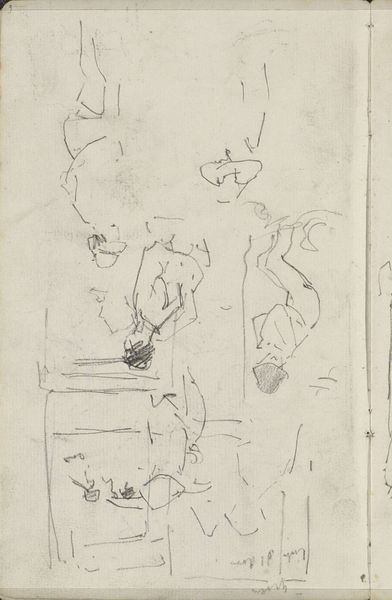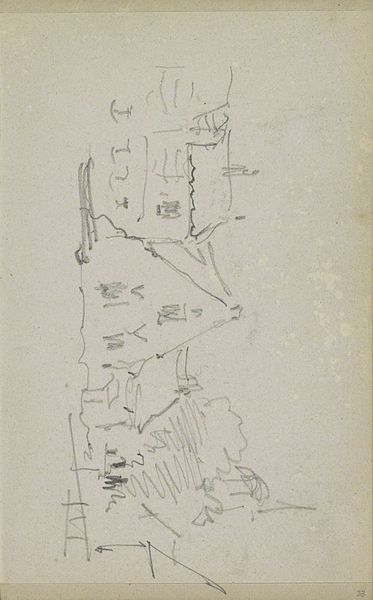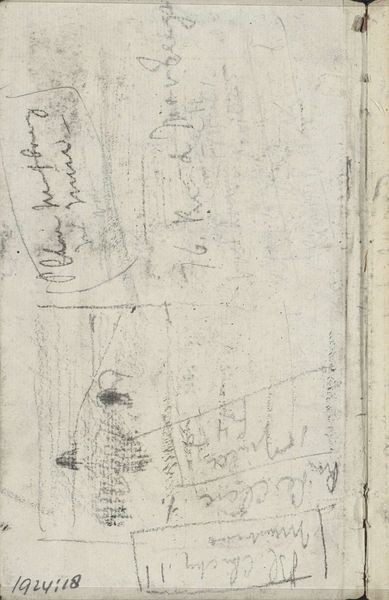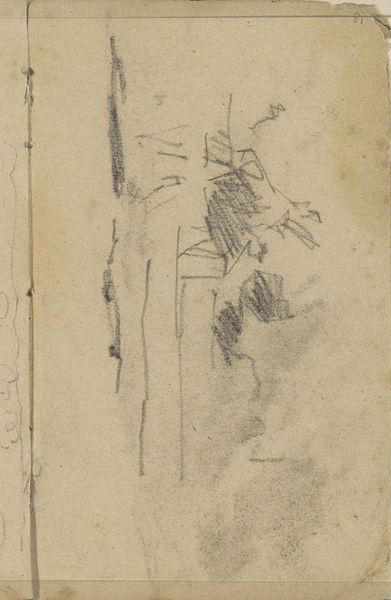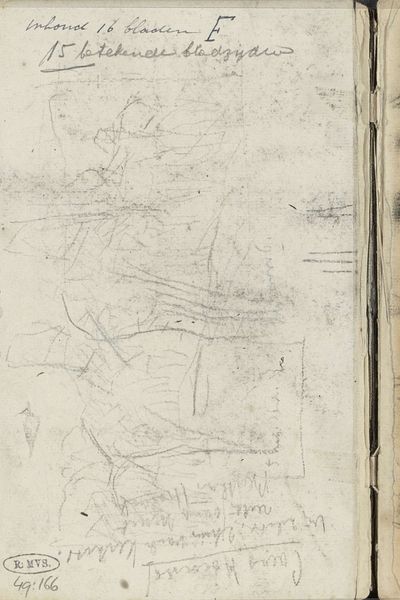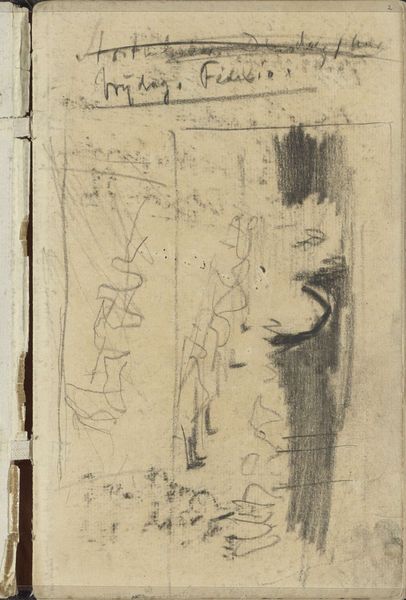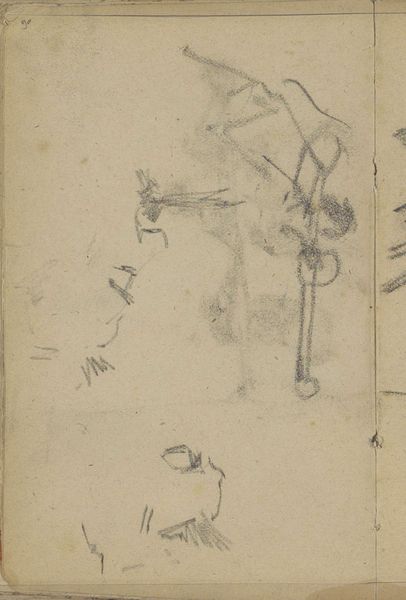
Studieblad met honden, gezichten en architectuurstudies Possibly 1881 - 1886
0:00
0:00
georgehendrikbreitner
Rijksmuseum
drawing, paper, pencil
#
portrait
#
drawing
#
face
#
impressionism
#
dog
#
paper
#
pencil
#
realism
Copyright: Rijks Museum: Open Domain
Curator: A whirlwind of impressions! A face here, a dog there, all sketched in what appears to be a great hurry. Editor: Yes, this is “Studieblad met honden, gezichten en architectuurstudies” – or Study Sheet with dogs, faces and architectural studies. It's a pencil drawing on paper by George Hendrik Breitner, dating possibly from 1881 to 1886. It is held in the Rijksmuseum collection. And, really, I'm struck by the seemingly random composition. What dictates the placement of these figures? Curator: Consider the material constraints. Paper was expensive. This single sheet functioned as a space for Breitner to capture fleeting observations, honing his skills through quick studies. The variety of subject matter speaks to the breadth of his artistic practice. Editor: The thinness of the pencil lines themselves, though, seems quite intentional. Look at the skeletal form of the buildings, as if capturing not the structure, but only its most essential geometry. It gives the sheet as a whole an unfinished quality, a sense of potential more than completed form. Curator: Exactly. This “unfinished quality” highlights Breitner's engagement with capturing modernity, particularly the social dynamics and shifting urban landscapes of Amsterdam. Think about the working-class individuals he painted – those were also sketches of everyday life that escaped formal representation. He gave the masses a face and, through that, visibility. This sheet of studies represents a key tool in service of that effort. Editor: While the "realism" is interesting, and even compelling to you, I notice a dynamism inherent in the rapid pencil strokes. Breitner seems less interested in photographic likeness and more intent on capturing movement, essence. Even the paper itself, its aging apparent, contributes to a sense of ephemerality. Curator: Precisely, these works exist because of industrial-level paper and pencil production, cheaper means of travel and visibility through mass distribution of images, the modernization of society allowed people more opportunities to express art and see their art shared more widely. Editor: Well, Breitner clearly had a strong compositional sense, an instinct for balanced asymmetry. Thank you for contextualizing, I better appreciate its structural tensions now. Curator: And I’m thankful that you appreciate the material and industrial components to art production. It’s so vital to understanding their social purpose.
Comments
No comments
Be the first to comment and join the conversation on the ultimate creative platform.
